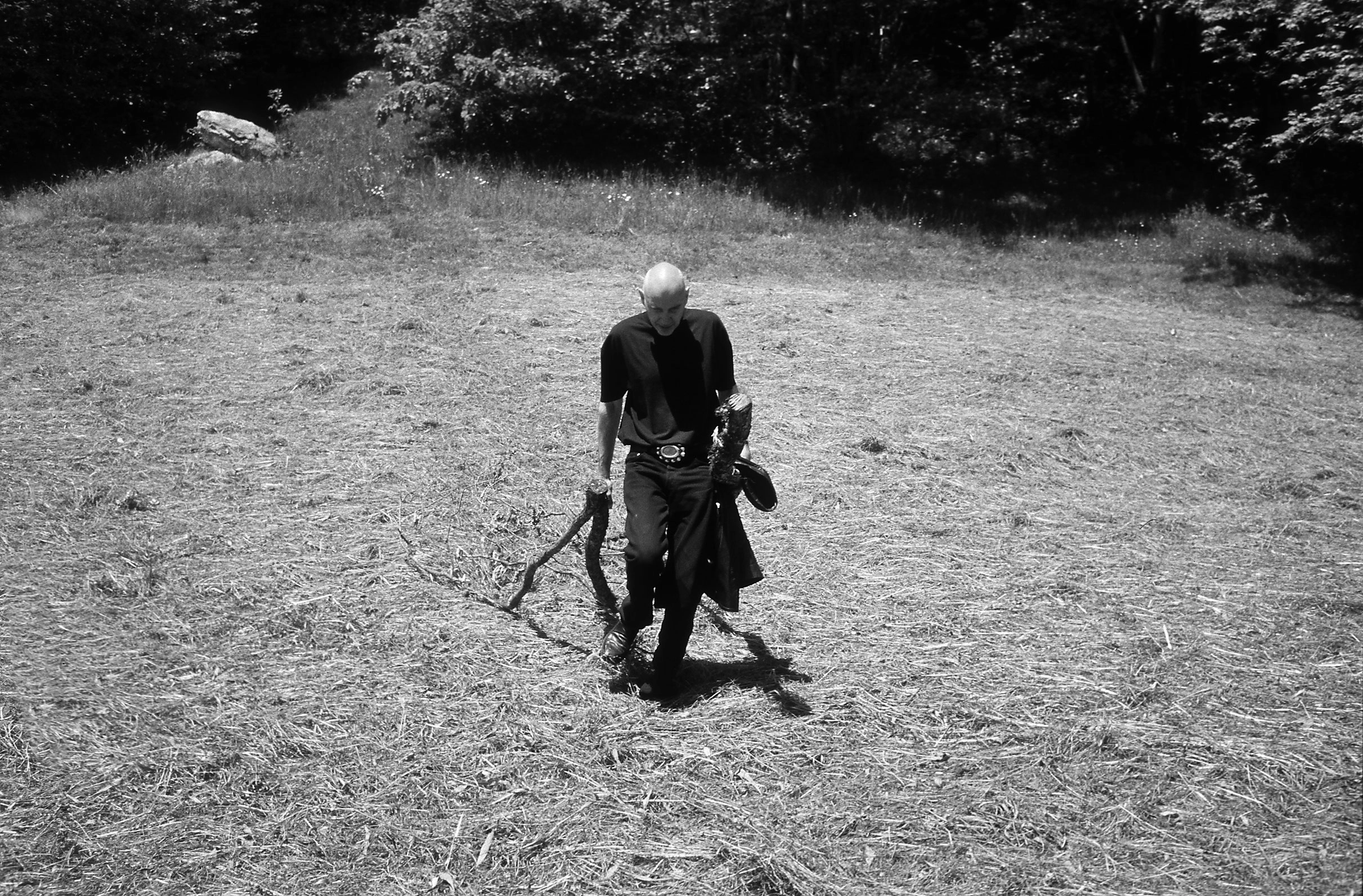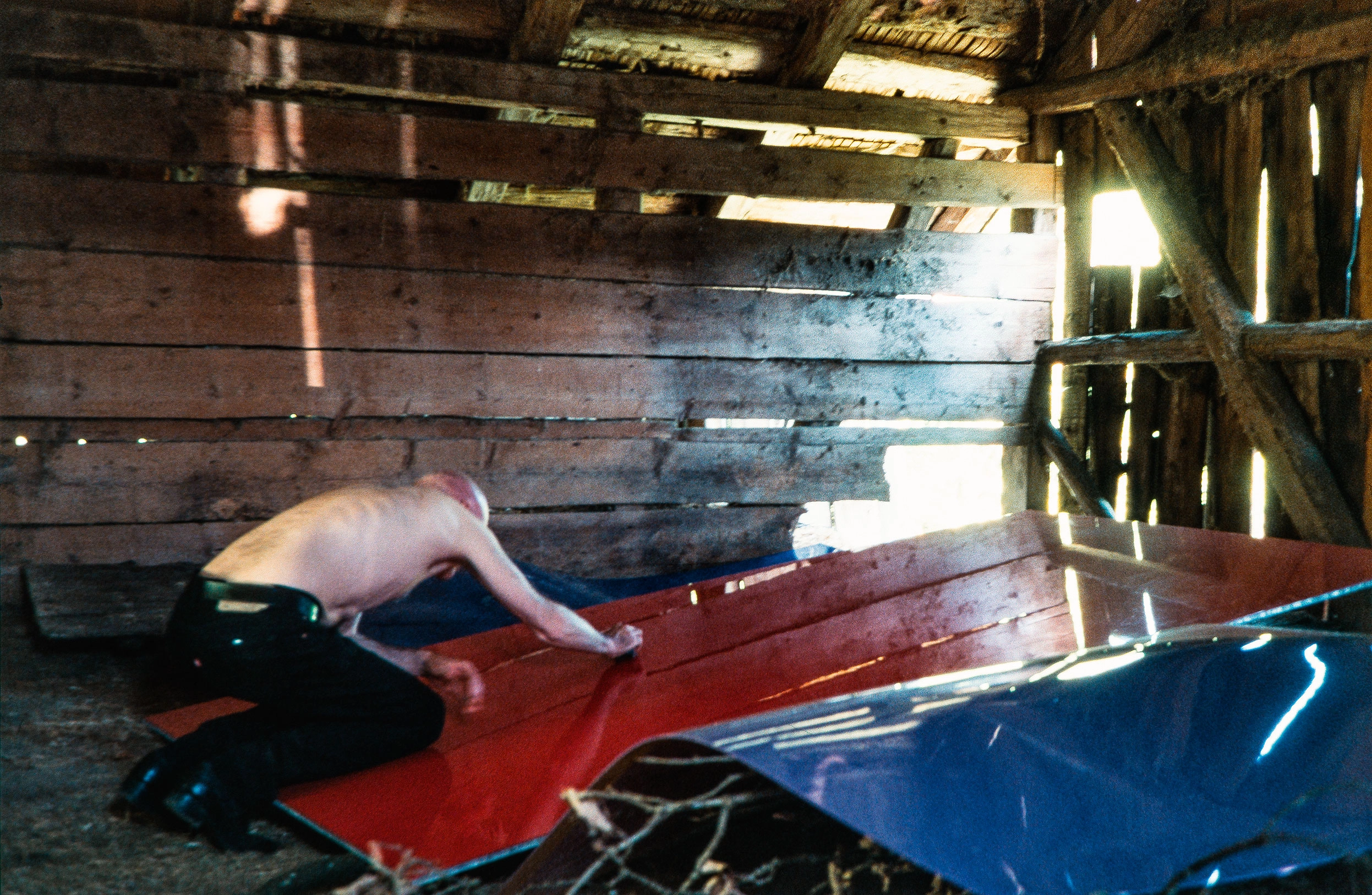Adrian Schiess’s panels are painted with glossy industrial lacquer and reflect incident light, thus demonstrating how the quality of light influences the tonality of colours. In his work, Schiess literally highlights the transitory properties of colour, space, and light. To him, painting means working on a surface. Most important, however, is the interaction between surface, surroundings, and viewers. Prior to his Flache Arbeiten (Flat Works), which established his international reputation, the artist produced several other groups of works.
In 1980 he laid fruit out in his father’s vegetable garden, painted and photographed a flower and his own face, painted in the snow, painted with water on an asphalted street, and suspended a painting on transparent plastic between trees. He recorded these experiments in documentary photographs, describing them in retrospect as “painting using the means of photography.”1 From the outset the intention was to give his painting volume by moving it into space. Schiess first painted on cardboard and wood before turning to particle board. He painted on blocks, planks, beams, and mainly on large scraps of cardboard that he then tore apart and exhibited as fragments, often reconfigured into larger groups. Common to this diversity of approaches is the element of fragmentation. The objective is never a self-contained, meaningful image; on the contrary, Schiess aims to disperse meaning in order to allow for the experience of looking at things with a liberated, open and purposeless gaze that is not confined to the picture plane.
Schiess intended his exhibition in Amden to last exactly one year and to address a subject that is of perennial interest to painters: light. In contrast to traditional landscape painting, his work relies on real time. Our image of a situation, defined by the appearance of the colours, emerges in the process of looking. To install the panels in the hayloft — Schiess lays them out on the floor whenever possible — he used boards found on site and, for the first time ever, deadwood found in the woods nearby. The soft PVC panels, spread out like skin on the branches, took on shapes unprecedented in Schiess’s oeuvre, generating surprising colour spaces and light reflections, especially in combination with the rigid aluminium panels also on display. The works Schiess required for the exhibition — monochrome panels spray-painted on both sides — were transported to Amden in the spring. Half a year later, he turned each of them over, changing the appearance of the ensemble during the cold months of the year. In addition, he complemented his regenerated exhibition with watercolours (winter landscapes), which he had painted in a hotel room in Amden during a snowstorm. To Schiess, the appeal of this special spot above Lake Walensee lay mainly in the proximity of natural forces, of wind and weather, the mass of green, the daylight filtering through the cracks in the raw planks of the barn and, of course, the lake itself, a light-reflecting expanse of colour embedded in a mountain landscape. The glistening, reflecting surface of the lake reminded Schiess of a wet painting that might be changed at any moment.
His works are geared towards concentrated, time-intensive viewing, since the changing light modifies their appearance. The remote location above the lake proved highly conducive to this. Visitors willing to do the necessary walking would also be prepared to spend time studying the works, and by the time they had made the trek up there were also sensitized to light and colour. In addition, the exhibition highlighted the limits of painting. The artist incorporated into his project the dust and dirt that would predictably settle on the glossy surfaces, reminding us that painting, even when created in a landscape, is ordinarily meant to be viewed in a protected indoor space. Since Adrian Schiess has always focused on the relationship between the artefact and its surroundings, however, this embrace of change is an obvious and inevitable consequence of an art concept that endorses variations arising out of the art’s on-site presentation.
- Adrian Schiess: Flache Arbeiten 1987–1990, with a conversation between Roman Kurzmeyer and Adrian Schiess and a postscript by Beat Wismer, Aarau: Aargauer Kunsthaus Aarau (Schriften zur Aargauischen Kunstsammlung), 2007, p. 51.

 Images
Images
 Info
Info





 2018, Malerei
2018, Malerei